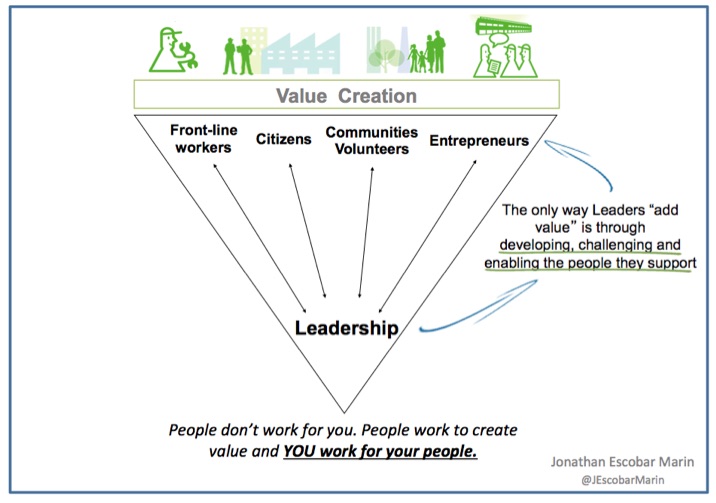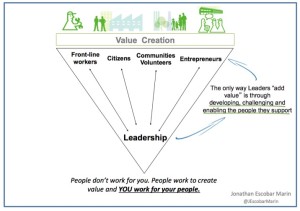When A.G. Lafley became the CEO of Procter and Gamble, he sent a strong, provocative message to his direct team and to the whole organization: he said that their real boss wasn’t him, their manager or even the shareholders. Their real boss, according to Lafley, was the customer, and he would work to help anyone in the organization to win with the customers – at all moments of truth.
Also, during my years at Procter & Gamble, learning from Toyota and experimenting with their lessons at our workplaces brought a fundamental leadership learning that reinforced A.G Lafley’s words.
Let me express this learning
In this sense, how you understand “work for your people” makes a huge difference. This isn’t being a servant: taking orders, being nice and trying to make people comfortable. It’s more like being a doctor: asking questions, diagnosing and prescribing for each person, what they need to do to grow and deliver superior customer value.
This approach is based on the proven evidence that customer problems are solved most quickly and effectively at their source.
But this requires deep understanding of the customer and full accountability by the teams closest to the customer at all levels. For this, it is fundamental that leaders grow by building other leaders in the organization. This requires people at all levels who are capable of building consensus and making holistic decisions to better serve customers. This means putting the customer at the center of the organization.
Putting the customer at the center of the organization requires continuous leadership intervention:
a) Building a safe and nurturing working environment, characterized by trust, that enables every individual at every level to surface customer problems and take initiative to solve them;
b) Facilitating a clear path for each associate to contribute to the company’s vision; creating a strong link between them and the ones that will be satisfied by their value-added work;
c) Unleashing people’s potential by continuously challenging and enabling their self-development, creativity, and autonomy. Doing this builds value creators and problem solvers who can continuously participate in effective problem solving to improve customer satisfaction.
d) Enabling effective cross-organizational collaboration and cooperation to take on the challenge of continually innovating to deliver customer value.
In essence, to work for people is to continuously battle against the under-utilization and under-development of people’s minds and skills.
It is important to understand that value for the customer is created through action: experimenting, testing, listening, reflecting, learning and building the ability of all the people in the organization to innovate and solve problems. Therefore, this means on a daily basis that every value-driven initiative should be tested by associates. Otherwise, the sustainability of the business is at risk.
Through this, people and customers are deeply respected. Our teams are inspired by the company’s vision and motivated by how they can personally go beyond their perceived limits to continuously touch and improve the lives of customers.
These are a few ways we can put the customer at the center of everything we do


